#mad max dementus
Text
Beyond the Wasteland of Vengeance
I just watched Furiosa: A Mad Max Saga and I loved it. It was hard at times as this is a harsh world and the rule of prequels tells us who has to die. But it was so worth it. We already know this is story of hope in the end. We know how Furiosa's Fury Road ends. It's starts with the same unrelenting determination (like the way she makes sure no one could tell of her home).
The cast is great (even if Chris Hemsworth fake face is somewhat distracting) but I think the most impressive was Alyla Browne who is Furiosa much longer than I expected for a film marketing Anya Taylor-Joy so heavily. She has some of the most badass parts (if you thought you hated Immortan Joe's sons before... well, thinking of their deaths is even more satisfying now). She is also made look so alike Anya that I initially missed the moment they switched.
But Immortan Joe and his band of monsters are just background creeps showing the decay of the world in general. The main villain is the one who took everything she loved from Furiosa. And didn't even remember half of it because he destroyed so many lives hers was nothing special. The one who set her on this path.
There is something sad about Dementus. You can almost feel, not compassion, but at least pity. You can see glimpses of a person he used to be before children died and you see how the end of the world destroyed him. It's like the voiceovers at the beginning describe what happened to his mind and soul when everything fell apart.
He's embodiment of that rot (and him going through white to red to black phases makes it even more clear). And he destroys everything he touches. At least the lords of Citadel, Bullet Farm and Gas Town built something. Something horrible and cruel but something. He can only destroy. He thinks finding Abundance will save him but he will only destroy that too. As I said, allegory.
Furiosa is his opposite because she doesn't let the cruelty of the world destroy her like this. She doesn't let the rot take hold of her and use her to spread. She never trusts the monsters surrounding her and she doesn't believe any of their promises. There is no safety in just letting them do that one thing. The cruelty will not end and will not be just that one thing.
I loved how she never stopped fighting. Not during her kidnapping. Not during her imprisonment. And then she found a way to escape one into another and then escape that one too. Using the very way those men wanted to poses her to plan her escape. Even when she loses her way home (figuratively and literally) to have her revenge it doesn't last. Even if she needed help in to follow her dream.
It's hard to trust in this world because a single act of kindness may cost you everything. But not everyone is evil. Even in Wasteland she finds someone who actually gives her help she needs. Someone she wishes to share her goal with. This films actually did "not all men" and it was great because it was earned but also because it helped explain why she would trust Max eventually. She already knew there are ones you can trust.
I tried to be pretty generic so far but behind this cut are SPOILERS for the very end (even though I don't say what it actually is - you can watch it yourself).
That ending was perfect both as foreshadowing who she will become but also as a callback to the beginning of the movie. Dementus tried to make her his daughter and use her to replace his children but she rejected him completely. Even if that was just swapping one monster for a bunch of even worse ones. And here at the ends he gloats about turning her into his daughter anyway. One in spirit anyway.
That like him she becomes creature of revenge and cruelty that nothing will ever satiate. Someone so obsessed with vengeance she will never stop even when the other side just want to leave (the mirroring of all the time he chased his prey and her chasing him was pretty nice). He thinks his death would just seal the deal because his suffering will never be great enough to soothe her pain.
You know, your standard - you will become like me spiel a villain does in moment like these. And lesser movies have heroes let villain go to prove them wrong (and then he tries to kill the hero anyway so the hero can have “my life was in danger” excuse to kill them anyway).
And she does lets him live but she doesn’t let him win. Once again she rejects him just like she did as a child. She remakes him into a symbol of her new purpose. She creates life out of a rotten man who did nothing but destroy lives of those around him. She makes him suffer for all the suffering he caused but that suffering is to build something new. And to create hope and future for those who have been abused by men like him.
And just like he asked she made it epic but as one last “fuck you” to him trying to control her story no one knows (well, almost no one). It’s epic and it’s a secret.
There is also something poetic that Furiosa eventually took over the Citadel - something he wanted so badly and never achieved. It retroactively made ending of Mad Max: Fury Road even better. And since it only took few days of them being gone he’s probably still there as she remakes it into the new Green Place.
#furiosa a mad max saga#furiosa: a mad max saga#famms#furiosa#mad max#fury road#mad max: fury road#george miller#dementus#immortan joe#furiosa spoilers#furiosa a mad max saga spoilers#mad max furiosa#mad max dementus
170 notes
·
View notes
Text


Chris Hemsworth in Furiosa as Dementus // Achilles, the Illiad
#mad max#furiosa#mad max furiosa#mad max saga#chris hemsworth#Dementus#ana taylor joy#mad max dementus
138 notes
·
View notes
Text
NO spoilers for Furiosa
Dementus is a dark mirror to Mad Max. It helps that his name comes from the word "demented" as in crazy, mentally unwell, or mad. Like Max, he lost his family and gained new ruthlessness from it. However, he abandoned all his morals and chooses to spread the trauma and pain he experienced while Max, while broken, still tries to do good. Dementus is chaotic evil while Max is neutral good
#mad max furiosa#mad max#max rockatansky#fury road#furiosa#dementus#mad max dementus#vuvalini#furiosa a mad max saga
78 notes
·
View notes
Text
Furiosa was alright but does anybody else think it's a little fucked up that they cast the guy who recently found out he's genetically predisposed to develop Alzheimer's to play a dude called "Dementus"?
#most morbid coincidence ever#mad max#mad max fury road#mad max dementus#mad max furiosa#furiosa a mad max saga
23 notes
·
View notes
Text

14 notes
·
View notes
Text
someone tell me why im not attracted to chris hemsworth but to dementus

#help#why#dementus#why not#chris hemsworth#mad max dementus#something is wrong with me#if villain bad why hot#fictional crushes#someone write a fic#please#there’s like two fics#all hail dementus#ok bye <3
16 notes
·
View notes
Text
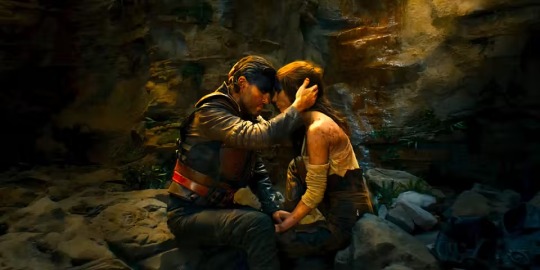
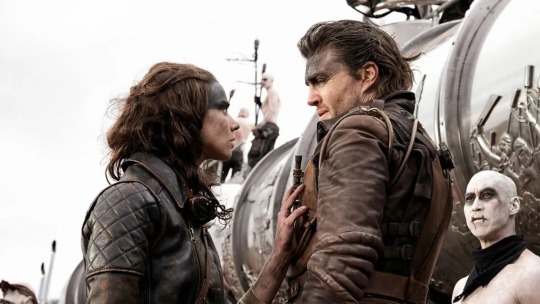
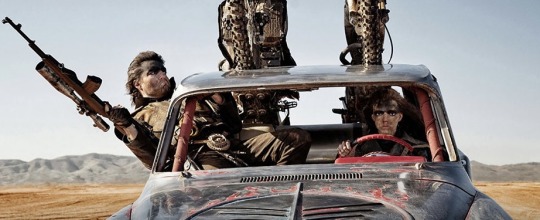
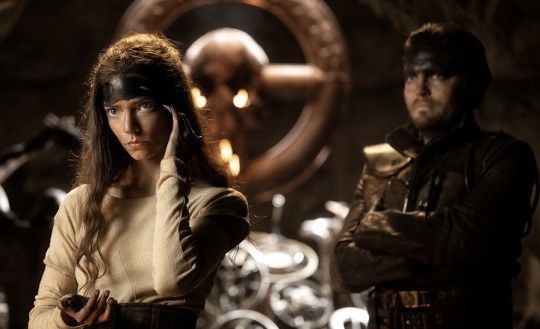
I’m gonna be thinking about them for the rest of my life.
#furiosa#praetorian jack#tom burke#anya taylor joy#I knew they wouldn’t be#but I wanted them to have a happy ending so bad :/#furiosa a mad max saga#george miller#this movie was so good#like it was stunning#dementus#chris hemsworth#immortan joe#mad max#Jack x Furiosa
2K notes
·
View notes
Text
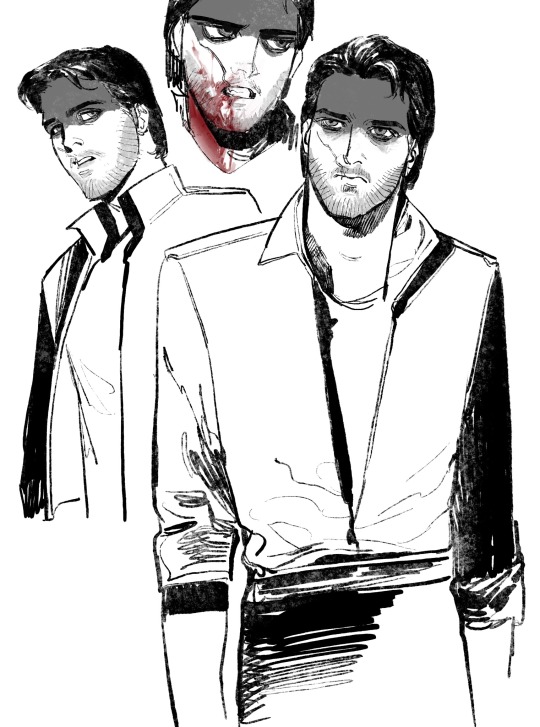
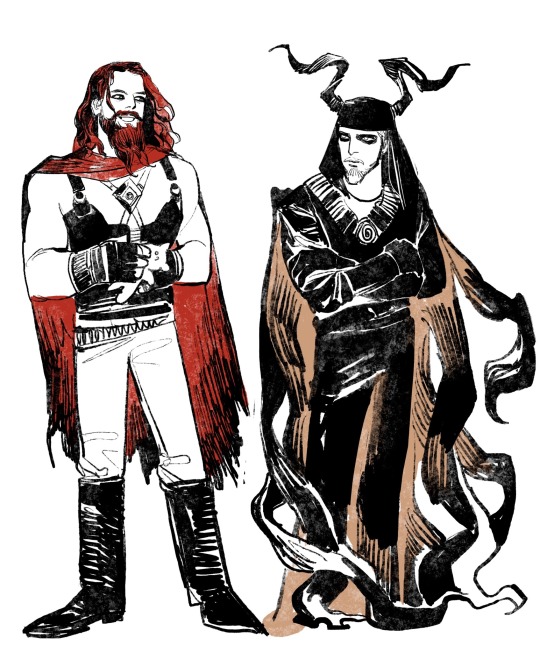

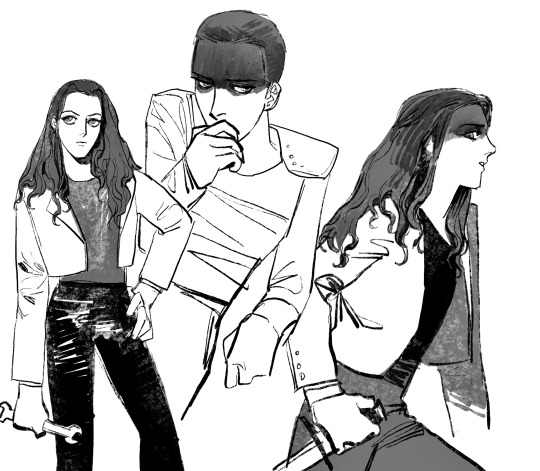
Doodles
971 notes
·
View notes
Text
An essay on Furiosa, the politics of the Wasteland, Arthurian literature and realistic vs. formalistic CGI

Mad Max: Fury Road absolutely enraptured me when it came out nearly a decade ago, and I will cop to seeing it four times at the theatre. For me (and many others who saw the light of George Miller) it set new standards for action filmmaking, storytelling and worldbuilding, and I could pop in its Blu Ray at any time and never get tired of it. Perhaps not surprisingly, I was deeply apprehensive about the announced prequel for Fury Road's actual main character, Furiosa, even if Miller was still writing and directing. We didn't need backstory for Furiosa—hell, Fury Road is told in such a way that NOTHING in it requires explicit backstory. And since it focuses on the Yung Furiosa, it meant Charlize Theron couldn't return with another career-defining performance. Plus, look at all that CGI in the trailer, it can't be as good as Fury Road.
Turns out I was silly to doubt George Miller, M.D., A.O., writer and director of Babe: Pig in the City and Happy Feet One & Two.
Furiosa: A Mad Max Saga is excellent, and I needn't have worried about it not being as good as Fury Road because it is not remotely trying to be Fury Road. Fury Road is a lean, mean machine with no fat on it, nothing extraneous, operating with constant forward momentum and only occasionally letting up to let you breathe a little; Furiosa is a classical epic, sprawling in scope, scale and structure, and more than happy to let the audience simmer in a quiet, almost painfully still moment. If its opening spoken word sequence by that Gandalf of the Wastes himself, the First History Man, didn't already clue you in, it unfolds like something out of myth, a tale told over and over again and whose possible embellishments are called attention to in the dialogue itself. Where Fury Road scratched the action nerd itch in my head like you wouldn't believe, Furiosa was the equivalent of Miller giving the undulating folds of my English major brain a deep tissue massage. That's great! I, for one, love when sequels/prequels endeavour to be fundamentally different movies from what they're succeeding/preceding, operating in different modes, formats and even genres, and more filmmakers should aim for it when building on an existing series.
This movie has been on my mind so much in the past week that I've ended up dedicating several cognitive processes to keeping track of all of the different ponderings it's spawned. Thankfully, Furiosa is divided into chapters (fun fact: putting chapter cards in your movie is a quick way to my heart), so it only seems fitting that I break up all of these cascading thoughts accordingly.
1. The Pole of Inaccessibility
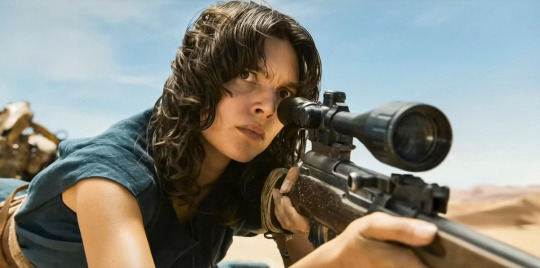
Furiosa herself actually isn't the protagonist for the first chapter of her own movie, instead occupying the role of a (very crafty and resourceful) damsel in distress for those initial 30-40 minutes. The real hero of the opening act, which plays out like a game of cat and mouse, is Furiosa's mother Mary Jabassa, who rides out into the wasteland first on horseback and then astride a motorcycle to track down the band of raiders that has stolen away her daughter. Mary's brought to life by Miller and Nico Lathouris' economical writing and a magnetic performance by newcomer Charlee Fraser, who radiates so much screen presence in such relatively little time and with one of those instant "who is SHE??" faces. She doesn't have many lines, but who needs them when Fraser can convey volumes about Mary with just a flash of her eyes or the effortless way she swaps out one of her motorcycle's wheels for another. To be quite candid, I'm not sure of the last time I fell in love with a character so quickly.
You notice a neat aesthetic contrast between mother and daughter in retrospect: Mary Jabassa darts into the desert barefoot, clad in a simple yet elegant dress, her wolf cut immaculate, only briefly disguising herself with the ugly armour of a raider she just sniped, and when she attacks it's almost with grace, like some Greek goddess set loose in the post-apocalyptic Aussie outback with just her wits and a bolt-action rifle; we track Furiosa's growth over the years by how much of her initially conventional beauty she has shed, quite literally in one case (hair buzzed, severed arm augmented with a chunky mechanical prosthesis, smeared in grease and dirt from head to toe, growling her lines at a lower octave), and by how she loses her mother's graceful approach to movement and violence, eventually carrying herself like a blunt instrument. Yet I have zero doubt the former raised the latter, both angels of different feathers but with the same steel and resolve. Of fucking course this woman is Furiosa's mother, and in the short time we know her we quickly understand exactly why Furiosa has the drive and morals she does without needing to resort to didactic exposition.
Anyway, I was tearing up by the end of the first chapter. Great start!
2. Lessons from the Wasteland

Most movies—most stories, really—don't actually tell the entire narrative from A to Z. Perhaps the real meat of the thing is found from H to T, and A-G or U-Z are unnecessary for conveying the key narrative and themes. So many prequels fail by insisting on telling the A-G part of the story, explaining how the hero earned a certain nickname or met their memorable sidekick—but if that stuff was actually interesting, they likely would have included it in the original work. The greatest thing a prequel can actually do is recontextualize, putting iconic characters or moments in a new light, allowing you to appreciate them from a different angle. All of season 2 of Fargo serves to explain why Molly Solverson's dad is appropriately wary when Lorne Malvo enters his diner for a SINGLE SCENE in the show's first season. David's arc from the Alien prequels Prometheus and Covenant—polarizing as those entries are—adds another layer to why Ash is so protective of the creature in the first movie. Andor gives you a sense of what it's like for a normal, non-Jedi person to live under the boot of the Empire and why so many of them would join up with the Rebel Alliance—or why they would desire to wear that boot, or even just crave the chance to lick it.
Furiosa is one of those rare great prequels because it makes us take a step back and consider the established world with a little more nuance, even if it's still all so absurd. In Fury Road, Immortan Joe is an awesome, endlessly quotable villain, completely irredeemable, and basically a cartoon. He works perfectly as the antagonist of that breakneck, Road Runner and Wile E. Coyote-ass movie, but if you step outside of its adrenaline-pumping narrative for even a moment you risk questioning why nobody in the Citadel or its surrounding settlements has risen up against him before. Hell, why would Furiosa even work for him to begin with? But then you see Dementus and company tear-assing around the wasteland, seizing settlements and running them into the ground, and you realize Joe and his consortium offer something that Dementus reasonably can't: stability—granted, an unwavering, unchangeable stability weighted in favour of Joe's own brutal caste system, but stability nonetheless. It really makes you wonder, how badly does a guy have to suck to make IMMORTAN JOE of all people look like a sane, competent and reasonable ruler by comparison?!?
…and then they open the door to the vault where he keeps his wives, and in a flash you're reminded just how awful Joe is and why Furiosa will risk her life to help some of these women flee from him years later. This new context enriches Joe and makes it more believable that he could maintain power for so long, but it doesn't make him any less of a monster, and it says a lot about Furiosa's hate for Dementus that she could grit her teeth and work for this sick old tyrant.
3. The Stowaway

Here's another wild bit of trivia about this movie: you don't actually see top-billed actress Anya Taylor-Joy pop up on screen until roughly halfway through, once Furiosa is in her late teens/early twenties. Up until this point she's been played by Alyla Browne, who through the use of some seamless and honestly really impressive CGI has been given Anya's distinctive bug eyes [complimentary]. It's one of those bold choices that really works because Miller commits to it so hard, though it does make me wish Browne's name was up on the poster next to Taylor-Joy's.
Speaking of CGI, I should talk about what seems to be a sticking point for quite a few people: if there's been one consistent criticism of Furiosa so far, it's that it doesn't look nearly as practical or grounded as Fury Road, with more obvious greenscreen and compositing, and what previously would've been physical stunt performers and pyrotechnics have been replaced with their digital equivalents for many shots. Simply put, it doesn't look as real! For a lot of people, that practicality was one of Fury Road's primary draws, so I won't try to quibble if they're let down by Furiosa's overt artificiality, but to be honest I'm actually quite fine with it. It helps that this visual discrepancy doesn't sneak up on you but is incredibly apparent right from the aerial zoom-down into Australia in the very first scene, so I didn't feel misled or duped.
Fury Road never asks you to suspend your disbelief because it all looks so believable; Furiosa jovially prods you to suspend that disbelief from the get-go and tune into it on a different wavelength. It's a classical epic, and like the classical epics of the 1950s and 60s it has a lot of actors standing in front of what clearly are matte paintings. It feels right! We're not watching fact, we're watching myth. I'm willing to concede there might be a little bit of post-hoc rationalization on my part because I simply love this movie so much, but I'm not holding the effects in Furiosa to the same standard as those in Fury Road because I simply don't believe Miller and his crew are attempting to replicate that approach. Without the extensive CGI, we don't get that impressive long, panning take where a stranded Furiosa scans the empty, dust-and-sun-scoured wasteland (75% Sergio Leone, 25% Andrei Tarkovsky), or the Octoboss and his parasailing goons. For the sake of intellectual exercise I did try imagining them filming the Octoboss/war rig sequence with the same immersive practical approach they used for Fury Road's stunts, however I just kept picturing dead stunt performers, so perhaps the tradeoff was worth it!
4. Homeward

Around the same time we meet the Taylor-Joy-pilled Furiosa in Chapter 3, we're introduced to Praetorian Jack, the chief driver for the convoys running between the Citadel and its allied settlements. Jack's played by Tom Burke, who pulled off a very good Orson Welles in Mank! and who I should really check out in The Souvenir one of these days. He's also a cool dude! Here are some facts about Praetorian Jack:
He's decked out in road leathers with a pauldron stitched to one shoulder
He's stoic and wary, but still more or less personable and can carry on a conversation
Professes to a certain cynicism, to quote Special Agent Albert Rosenfield, but ultimately has a capacity for kindness and will do the right thing
Shoots a gun real good
Can drive like nobody's business
So in other words, Jack is Mad Max. But also, no, he clearly isn't! He looks and dresses like Mad Max (particularly Mel Gibson's) and does a lot of the same things "Mad" Max Rockatansky does, but he's also very explicitly a distinct character. It's a choice that seems inexplicable and perhaps even lazy on its face, except this is a George Miller movie, so of course this parallel is extremely purposeful. Miller has gone on record saying he avoids any kind of strict chronology or continuity for his Mad Max movies, compared to the rigid canons for Star Trek and Star Wars, and bless him for doing so. It's more fun viewing each Mad Max entry as a new revision or elaboration on a story being told again and again generations after the fall, mutating in style, structure and focus with every iteration, becoming less grounded as its core narrative is passed from elder to youth, community to community, genre to genre, until it becomes myth. (At least, my English major brain thinks it's more fun.) In fact there's actually something Arthurian to it, where at first King Arthur was mentioned in several Welsh legends before Geoffrey of Monmouth crafted an actual narrative around him, then Chrétien de Troyes added elements like Lancelot and infused the stories with more romance, and then with Le Morte d'Arthur Thomas Malory whipped the whole cycle together into one volume, which T.H. White would chop and screw and deconstruct with The Once and Future King centuries later.
All this to say: maybe Praetorian Jack looks and sounds and acts like Max because he sorta kinda basically is, being just one of many men driving back and forth across the wasteland, lending a hand on occasion, who'll be conflated into a single, legendary "Mad Max" at some point down the line in a different History Man's retelling of Furiosa's odyssey. Sometimes that Max rips across the desert in his V8 Interceptor, other times driving a big rig. Perhaps there's a dog tagging along and/or a scraggly and at first aggravating ally played by Bruce Spence or Nicholas Hoult. Usually he has a shotgun. But so long as you aren't trying to kill him, he'll help you out.
5. Beyond Vengeance
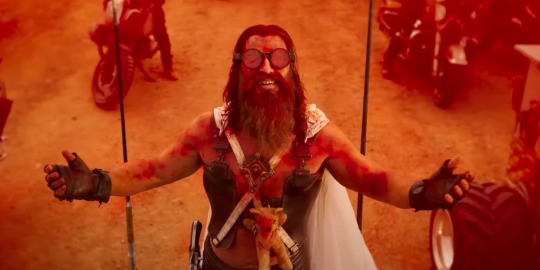
The Mad Max movies have incredibly iconic villains—Immortan Joe! Toecutter! the Lord Humongous!—but they are exactly that, capital V Villains devoid of humanizing qualities who you can't wait to watch bad things happen to. Furiosa appears to continue this trend by giving us a villain who in fact has a mustache long enough that he could reasonably twirl it if he so wanted, but ironically Dementus ends up being the most layered antagonist in the entire series, even moreso than the late Tina Turner's comparatively benevolent Aunty Entity from Beyond Thunderdome. And because he's played by Chris Hemsworth, whose comedic delivery rivals his stupidly handsome looks, you lock in every time he's on screen.
Something so fascinating about Dementus is that, for a main antagonist, he's NOT all-powerful, and in fact quite the opposite: he's more conman than warlord, looking for the next hustle, the next gullible crowd he can preach to and dupe—though never for long. For all his bluster, at every turn he finds himself in way over his head and writing cheques he can't cash, and this self-induced Sisyphean torment makes him riveting to watch. You're tempted to pity Dementus but it's also quite difficult to spare sympathy for someone who's so quick to channel their rage and hurt and ego into thoughtless, burn-it-all-down destruction. When you're not laughing at him, you're hating his guts, and it's indisputably the best work of Chris Hemsworth's career.
It's in this final chapter that everything naturally comes to a head: Furiosa's final evolution into the character we meet at the start of Fury Road, the predictable toppling of Dementus' precariously built house of cards, and the mythmaking that has been teased since the very first scene becoming diagetic text, the last of which allows the movie to thoroughly explore the themes of vengeance it's been building to. A brief war begins, is summarized and is over in the span of roughly a minute, and on its face it's a baffling narrative choice that most other filmmakers would have botched. But our man Miller's smart enough to recognize that the result of this war is the most foregone of conclusions if you've been paying even the slightest bit of attention, so he effectively brushes past it to get to the emotional heart of the climax and an incredible "Oh shit!" payoff that cements Miller as one of mainstream cinema's greatest sickos.
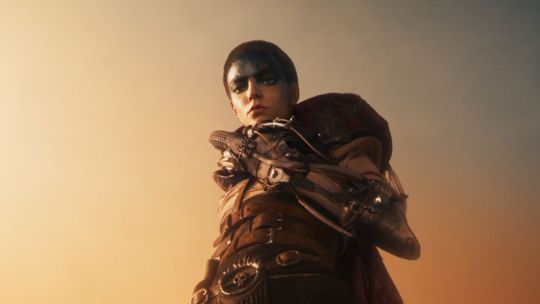
Fury Road remains the greatest Mad Max film, but Furiosa might be the best thing George Miller has ever made. If not his magnum opus, it does at least feel like his dissertation, and it makes me wish Warner Bros. puts enough trust in him despite Furiosa's poor box office performance that he's able to make The Wasteland. Absolutely ridiculous that a man just short of his 80th birthday was able to pull this off, and with it I feel confident calling him one of my favourite directors.
#furiosa: a mad max saga#mad max#mad max: Fury road#furiosa#imperator furiosa#george miller#mary jabassa#dementus#praetorian jack#immortan joe#max rockatansky#analysis#essay#anya taylor-joy#chris hemsworth#charlee fraser#tom burke#charlize theron#continuity#canon#arthurian literature#arthurian mythology#the matter of britain#king arthur#alyla browne
817 notes
·
View notes
Text








Furiosa: A Mad Max Saga (2024) dir. George Miller
Mad Max: Fury Road (2015) dir. George Miller
#filmedit#madmaxedit#furiosaedit#anya taylor joy#chris hemsworth#charlize theron#tom hardy#**elysiaedits#**elysia's gifs#*parallels#furiosa#dementus#max rockatansky#praetorian jack#mad max: fury road#furiosa (2024)#film
921 notes
·
View notes
Text

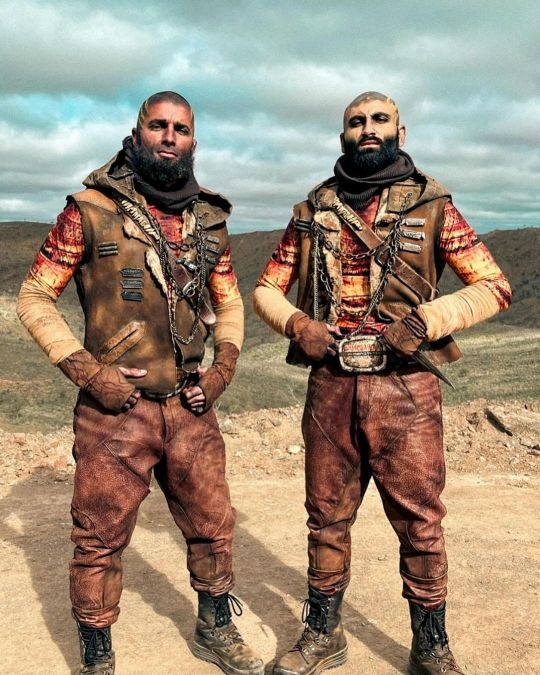
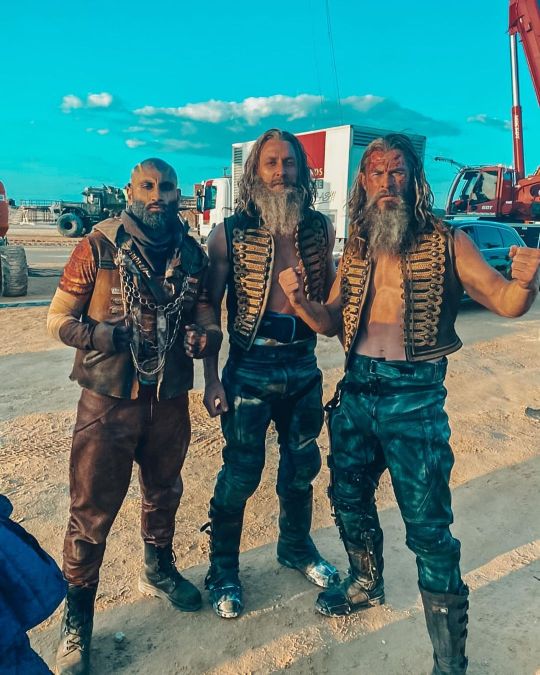
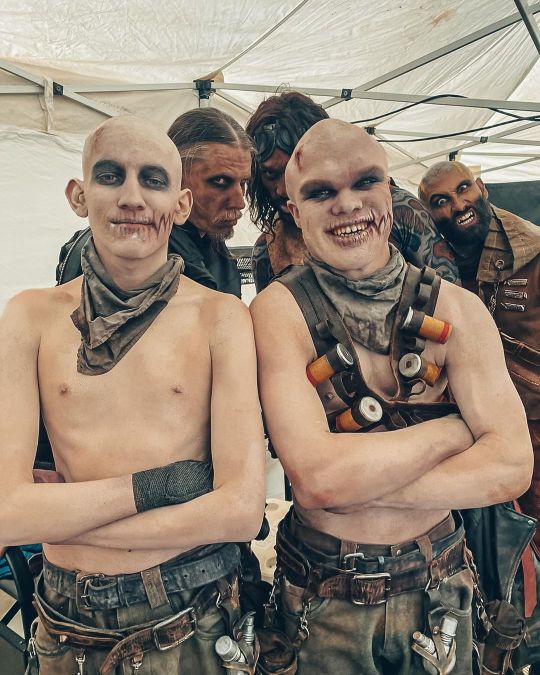



More behind-the-scenes pics from Furiosa
Posted by matusethepharaoh on Instagram
#not me uploading more octoboss propaganda#mad max#furiosa#furiosa a mad max saga#matuse#goran d kleut#david collins#goran kleut#cj bloomfield#big jilly#history man#war boys#octoboss#fang furiosa#dementus#chris hemsworth#lachy hulme#rizzdale pell#smeg furiosa
660 notes
·
View notes
Text



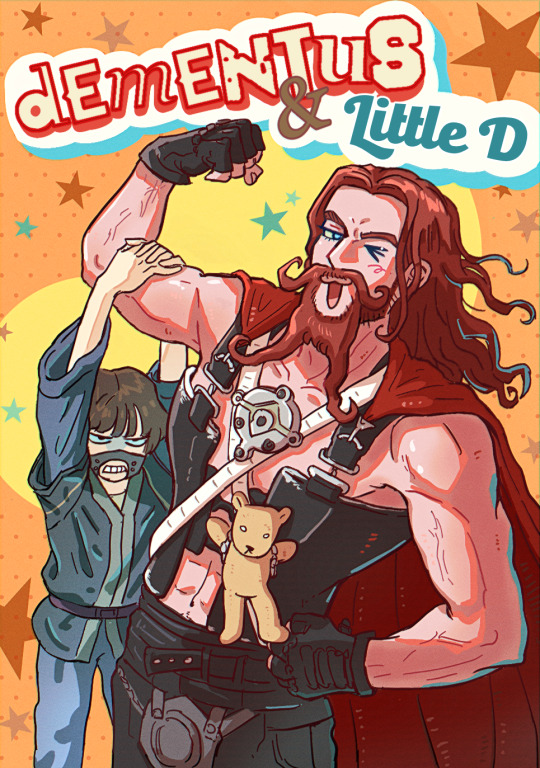
#mad max fury road#mad max furiosa#furiosa a mad max saga#imperator furiosa#max rockatansky#dementus#fan art#my art
851 notes
·
View notes
Text


also a belated Dementus and Furiosa (pre-haircut)
Great guys, I like them
#I like how Furiosa in the prequel was kinda Always Like That and just got exponentially Even More So#Good movie#mad max#furiosa#dementus
492 notes
·
View notes
Text





Here is my Furiosa poster - inspired by the 1980 artwork for the original Mad Max!
I remember seeing this poster as a kid and thinking his pose was so cool (and kinda weird?)
I just love the demented, chaotic, and beautiful world of Mad Max so much. Dementus’ “Six Foot” truck is one of my favorite vehicles of all time.
#illustration#movie poster#fan art#design#key art#mad max#furiosa#immortan joe#tom hardy#poster#anya taylor joy#mad max furiosa#imperator furiosa#retro poster#monster trucks#dementus#chris hemsworth#george miller#drawing#artwork
470 notes
·
View notes
Text
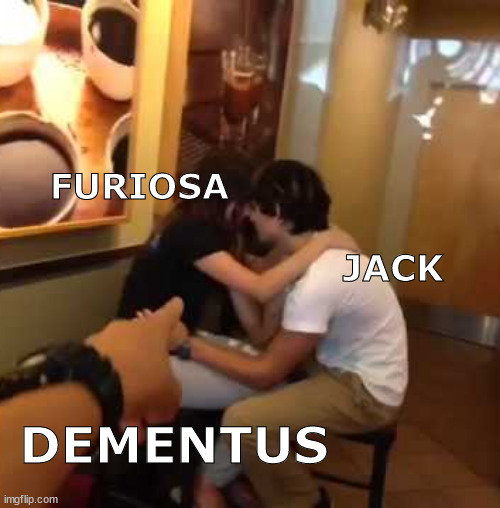
You know when
771 notes
·
View notes
Text



Praetorian Jack's reaction when he thinks Dementus has killed Furiosa.
#furiosa a mad max saga#furiosa#praetorian jack#tom burke#furiosa x jack#dementus sir thou hast made an error of judgment
458 notes
·
View notes